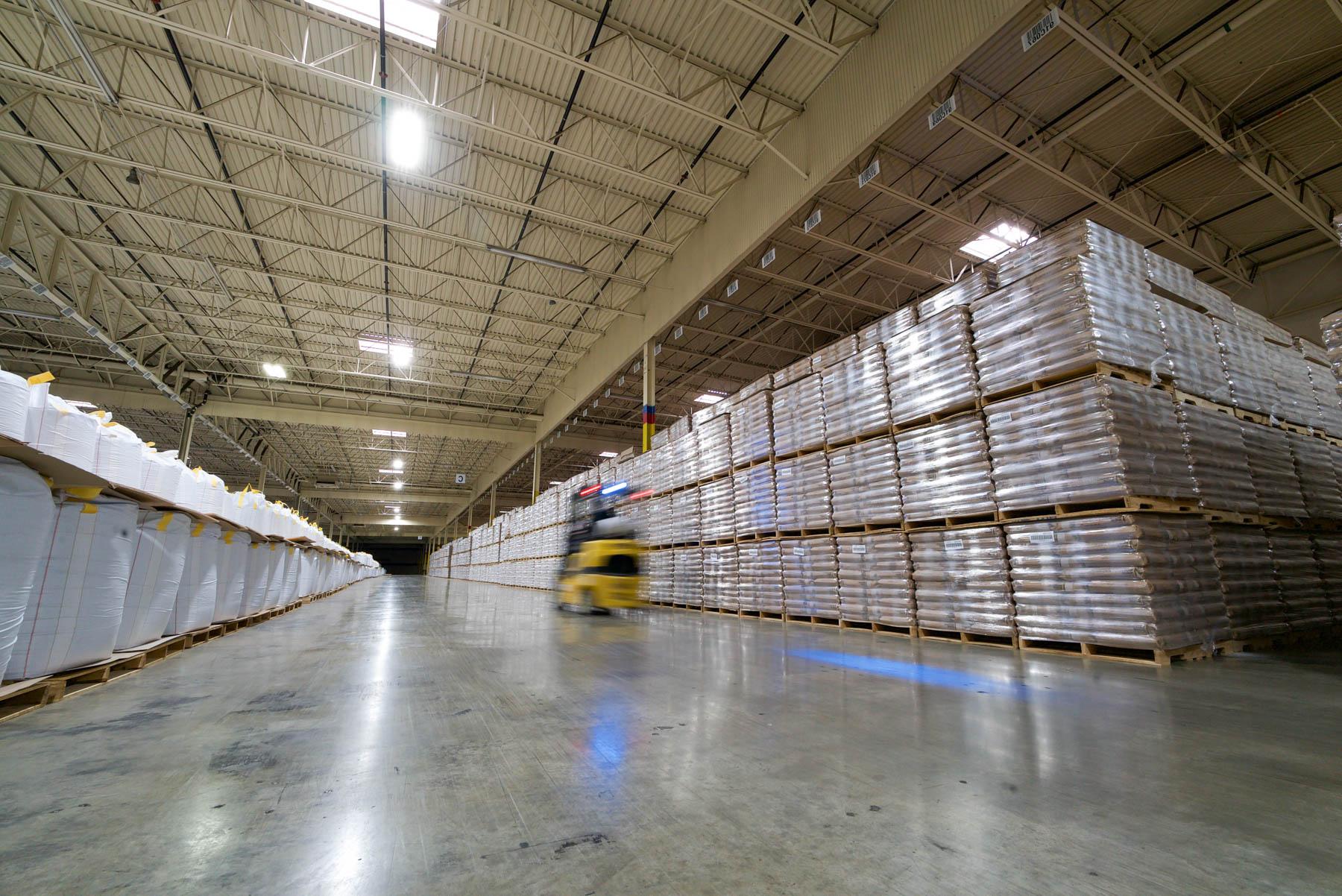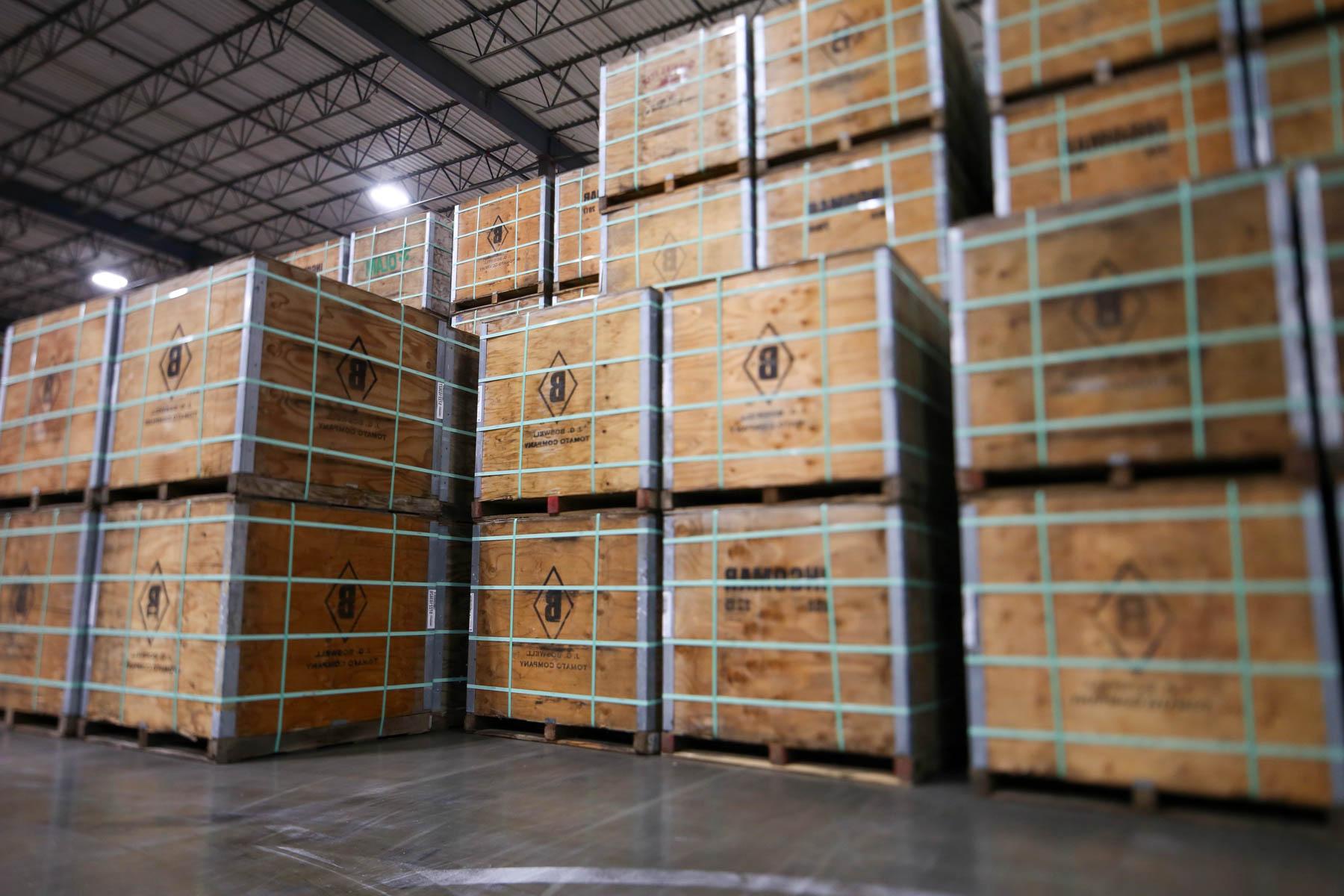
Commercial Food Packaging Logistics
Leaders in Commercial Food Packaging Logistics
When it comes to the shipment and storage of commercial food packaging, Murphy is well-established as a leader in safe, secure, and reliable commercial food packaging logistics.
In food logistics, different products must be stored at different temperatures. Commercial food packaging plays a big part in the success of your food logistics, as storing a product at the incorrect temperature can quickly result in waste, and the packaging that protects that food while in storage plays a big part in the effect the temperature has on the product.
The majority of perishable foods must be stored at or below 40 degrees Fahrenheit. Even though 32 degrees Fahrenheit is officially a “freezing” temperature, food deteriorates more quickly between 0 and 32 degrees Fahrenheit, hence the majority of frozen food items need to be maintained at a temperature of around 0 degrees.
Knowing the distance of your shipment will help you make sure you include enough insulation and cooling systems to keep it cool and fresh throughout the journey.
Your commercial food packaging needs to be sturdy enough to safeguard the goods over a protracted delivery voyage. Additionally, it must follow tight guidelines for food safety and hygiene. Additionally, you need to have enticing packaging that gives people a reason to trust your brand.
Common Commercial Food Packaging
There are many options for a food manufacturer to use when deciding on packaging. The proper form of packaging depends on what is being stored, and consideration should be made for transportation and delivery. Some of the most common and recommended types of food packaging include;
Boxes
A popular form of food packaging is the box. They are more durable since they might be composed of metal, wood, or corrugated fiberboard. The most commonly used boxes for the shipment of food are corrugated boxes.
These containers are distinguished for their strong construction, which enables for the shipment of food products with confidence. The food is also kept fresh and sealed in corrugated boxes, reducing the chance of spoilage. The best part about this form of packaging is that you can create a variety of styles and it is adaptable.
Boxes are popular due to their capacity to shield against foodborne germs. Extreme heat is used during the manufacture of corrugated boxes to fuse the components together. Most bacteria cannot tolerate this kind of heat, which can reach temperatures above 180°F. There is seldom any bacteria remaining in the corrugated fibers when food is placed in corrugated cartons. These containers are thus hygienic, secure, and trustworthy for food storage.
Glass Jars
Due to its qualities that include recycling, reuse, and neutral reactivity, glass is often used as packing material for commercial foods. Glass prevents contamination and allows for long-term food and beverage preservation. For instance, beer is preserved by being kept in dark glass bottles. Glass jars, lids, containers, and bottles come in a variety of sizes, styles, and colors to suit different needs.
Food, drinks, chemicals, medications, cosmetics, and other products are frequently packaged in glass. Glass ampoules, glass bottles, glass lids, and glass stoppers are product segments that make up the worldwide glass packaging market. The applications for food include wet food packaging, dry food packaging, packaging for alcoholic and non-alcoholic beverages, and specialty food packaging.
Plastic Bottles (PETE)
PETE is the same polyethylene that is used to create stiff bottles from foil pouches. The letters PET or PETE are printed on the bottom of bottles next to the recycle symbol. This kind of container has high oxygen barrier properties and can be used to store dry bulk goods with oxygen absorbers. The sealed containers’ low oxygen concentration helps maintain product quality by preventing insect infestation and safeguarding the stored food from vermin attack. These containers offer several years of storage capacity while being well-suited for products that are rotated often.
Polystyrene
Polystyrene is used to create a wide range of consumer goods, including hot and cold beverage cups and restaurant packaging. It is widely applied in settings where cleanliness is crucial. Styrene, which also occurs naturally in foods like strawberries, cinnamon, and coffee, is strung together (polymerized) to create polystyrene.
Available in two different forms—rigid and foam—polystyrene is frequently used in food packaging. Clear plates, bowls, drink cups, straws, cutlery, and food containers are all made in the hard shape. For plates, insulated drinking cups and bowls, clamshell food containers, and trays, the foam form—sometimes referred to by its brand name, Styrofoam—is employed. Foam is also used to package goods for shipping, such as in packing peanuts.
Foil Pouches
Pouches made of foil laminate and polyethylene terephthalate (PET or PETE) are excellent food containers. The foil layer significantly lowers the amount of oxygen and moisture that pass through the film. One brand name that is frequently used as a generic name is Mylar.
Because of its greater recyclability and special qualities for product brands over other materials like plastics and glass, aluminum is a popular choice for food packaging. It is infinitely recyclable compared to plastic and paper while being lighter and studier than glass. One of the most malleable and adaptable substances known to man, it is easily molded, stable, resistant to organic acids, and a good conductor of electricity and heat. Additionally, it is one of the most prevalent elements in the crust of the Earth, making it widely accessible.
Even without maintenance, aluminum packaging can last a very long time in good condition. Also extending its longevity is the fact that it resists corrosion. This makes aluminum the perfect material for food packaging since it will keep a product safe throughout its shelf life without running the risk of deteriorating, which would damage the barrier between the product and external environmental forces.
Food and Beverage Logistics Experts
The carrier you choose has a big impact on how affordable and trustworthy your shipping experience is. You also need to think about the policies and guidelines the carrier has for the transportation of food items.
Murphy assists our customers in the food and beverage industry every day by resolving supply and logistics challenges. We are able to design distribution networks that go above and beyond what our clients expect. You will benefit from getting a fresher product delivered because we cut down on mileage and time.
Create your custom food and beverage logistics plan with our team and rest easy knowing you’ve partnered with the best. Our understanding of commercial food packaging storage and transportation allows you to have the packaging you need on time.


